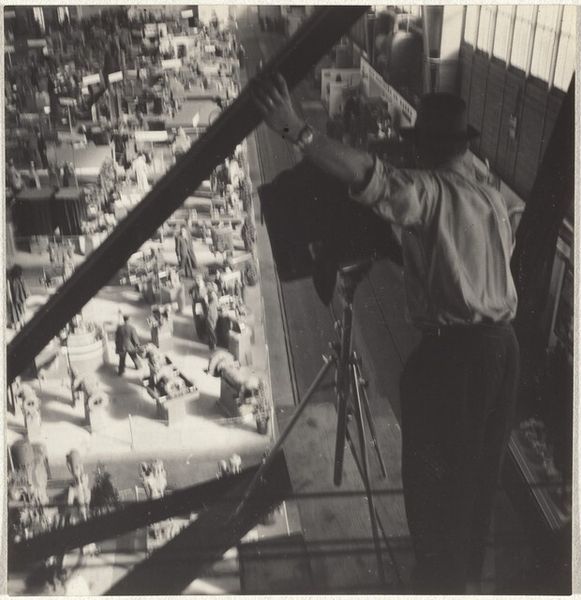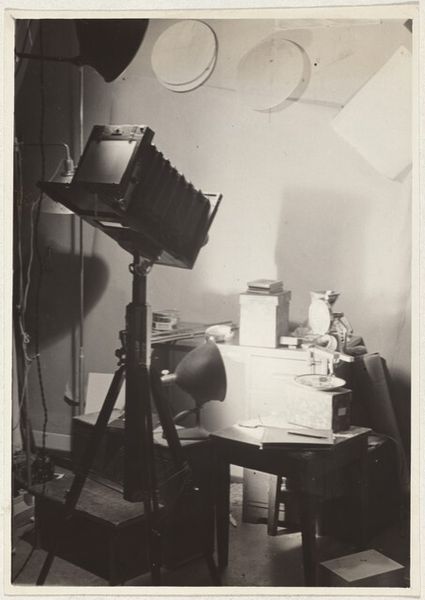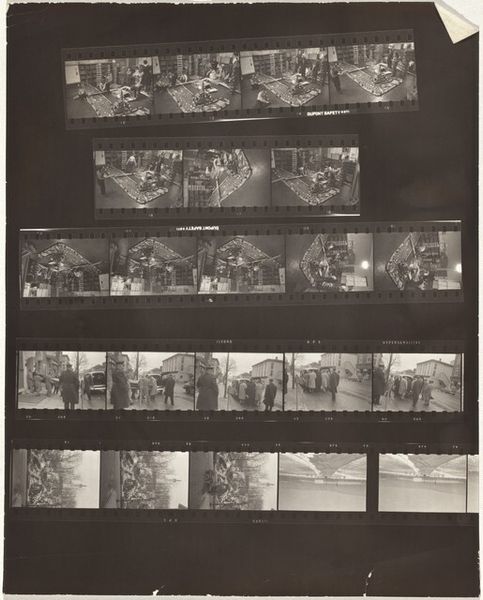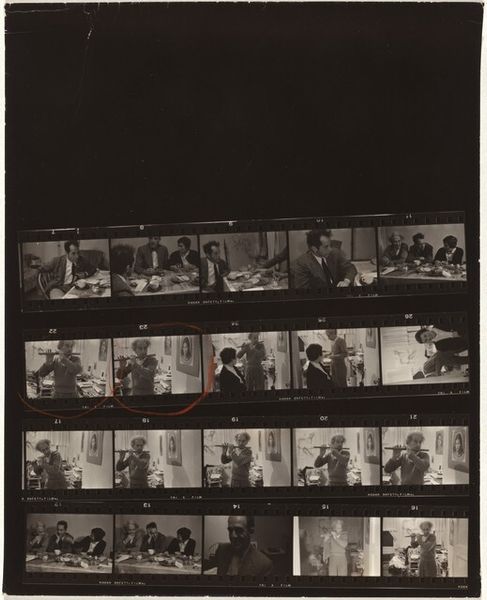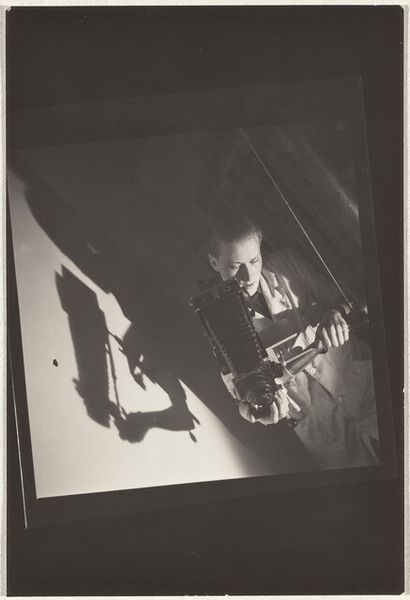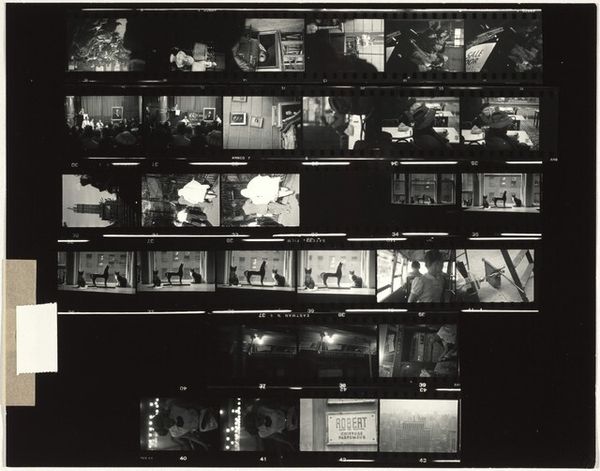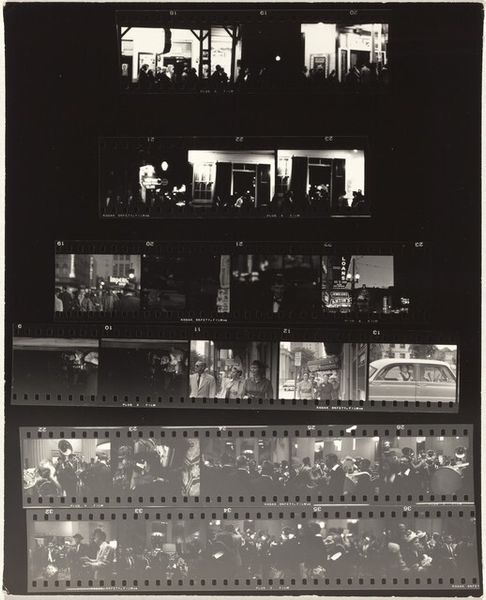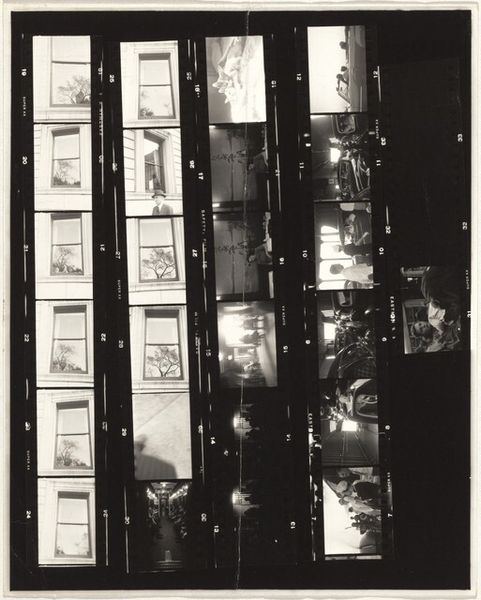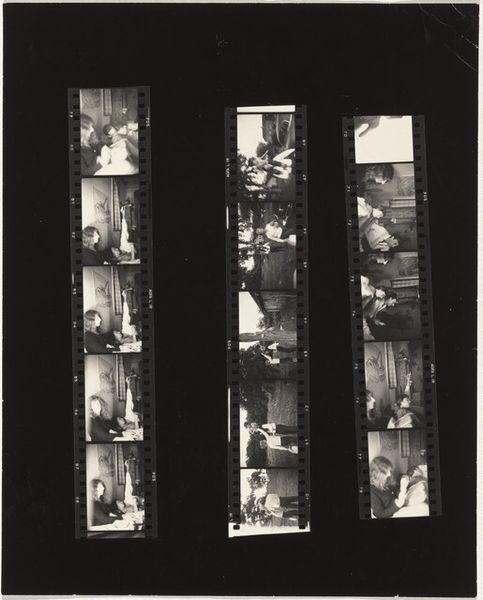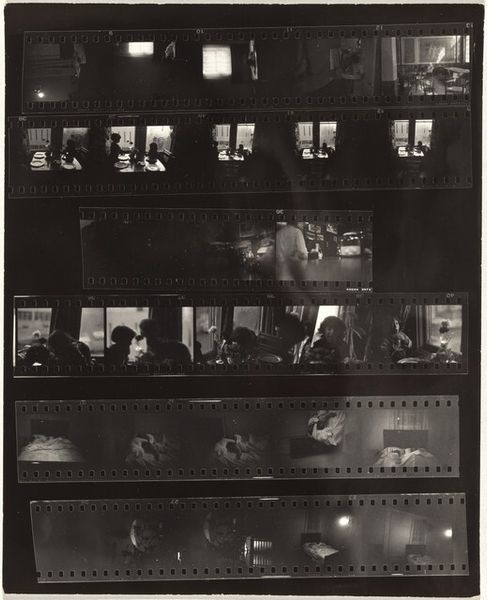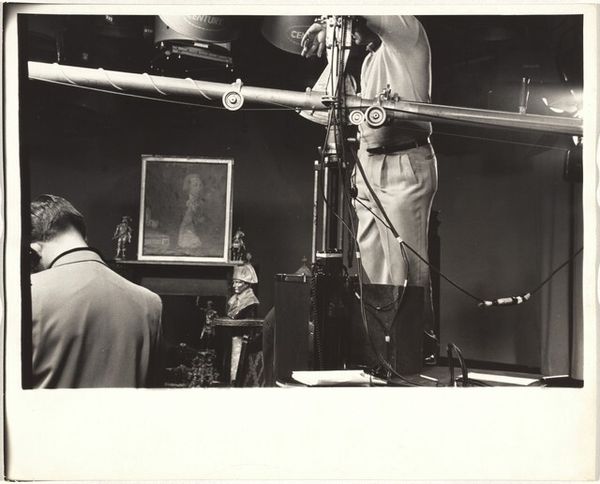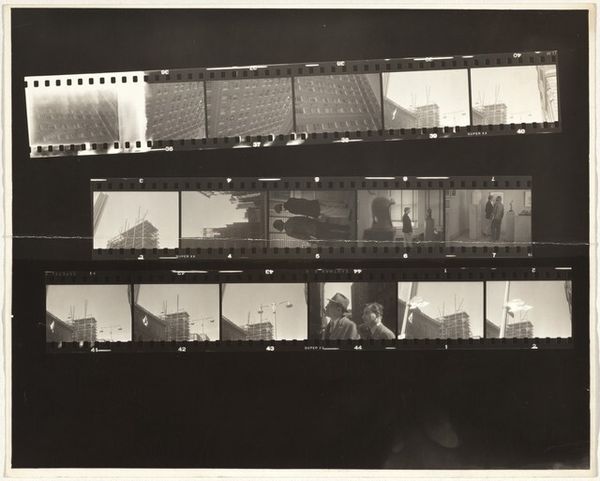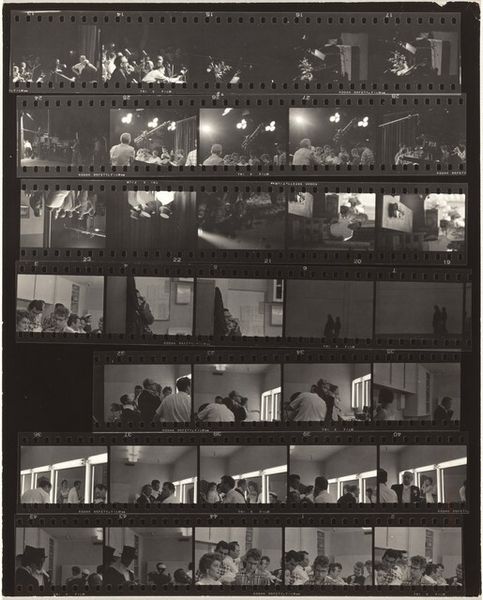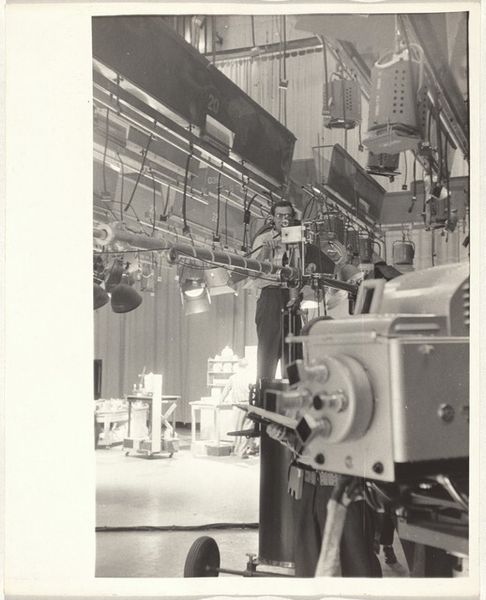
print, photography
#
film photography
# print
#
archive photography
#
photography
#
culture event photography
#
photojournalism
#
monochrome photography
#
history-painting
#
monochrome
Dimensions: sheet (trimmed to image): 5.8 x 5.6 cm (2 5/16 x 2 3/16 in.)
Copyright: National Gallery of Art: CC0 1.0
Curator: Here we have Robert Frank's photograph, "On a job with Eidenbenz, Basel," taken in 1945. It's a monochrome print, likely a gelatin silver print, given the period. Editor: The high vantage point is really striking. The photographer looms in the foreground, this enormous camera planted like a gatekeeper over a Lilliputian landscape of machinery. It feels almost theatrical. Curator: Absolutely. What grabs me is the visibility of the photographic process itself. We see the photographer, presumably Frank himself, documenting another artisan at work, perhaps documenting the construction or display of machines. It makes you consider the layers of labor involved. Editor: It's more than just documentation. The repetition of shapes – the camera bellows mirroring the forms of the machines below, creates a symbolic resonance. These objects, and their creators, embody progress and perhaps even a striving for a better future just as Europe begins to rebuild after war. The monochrome adds weight. Curator: It makes you wonder, doesn't it, about the materiality of post-war recovery? How do we move from wartime production to peacetime manufacture? This photograph, as an artifact, reminds us that images themselves are part of this material history. The tools needed to document this moment. Editor: It is a potent reminder. Think about the symbolism tied to cameras—objects able to capture reality, but also devices wielded to manipulate memory and disseminate narratives. The act of documentation is so very powerful, and maybe more powerful as photography became increasingly democratic and attainable for working-class communities. Curator: Exactly. This isn't just a photograph; it's a material record of labor and technological transition during a pivotal moment in history, preserved through photographic processes that relied upon their own forms of labor. Editor: I leave with the image in mind, and how powerful and long lasting symbols can truly be. Curator: And with how objects mediate labor, recording both work and life, especially after tumultuous upheavals like WWII.
Comments
No comments
Be the first to comment and join the conversation on the ultimate creative platform.
